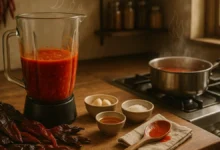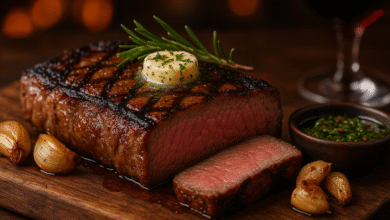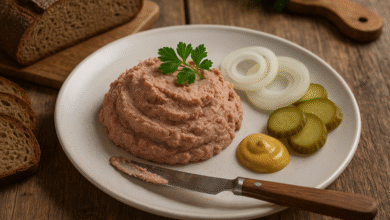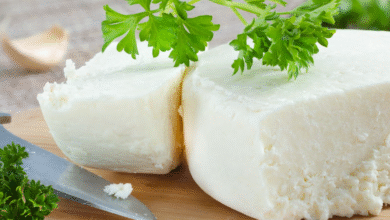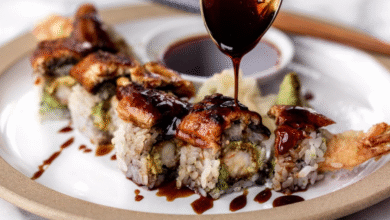Master the Art of Flavor: How to Make Hot Sauce with Dried Peppers Like a Pro
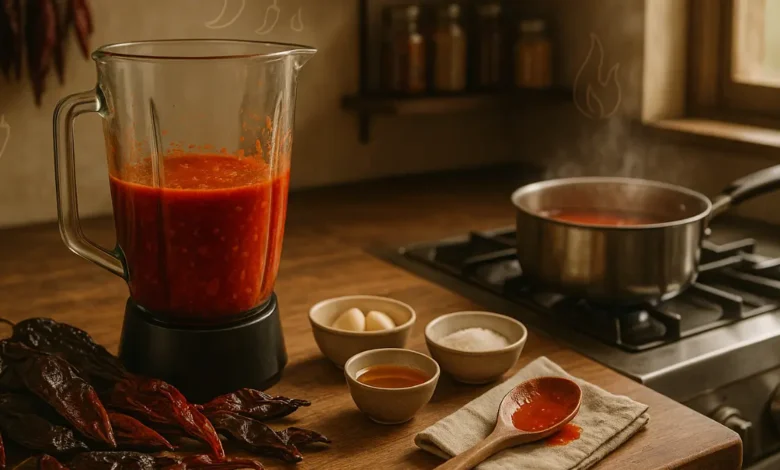
Learn how to make hot sauce with dried peppers using expert techniques. Discover flavor combinations, blending tips, and storage methods for rich, spicy, homemade sauces.
Introduction to Making Hot Sauce with Dried Peppers
Making hot sauce with dried peppers is one of the most rewarding culinary projects you can try in your kitchen. The deep, smoky, and complex flavors that dried chilies bring to your sauce simply can’t be matched by fresh ones alone. Whether you love the punchy heat of cayenne, the smoky notes of chipotle, or the earthy kick of guajillo, dried peppers offer an endless canvas for creativity.
Unlike many people think, crafting your own hot sauce doesn’t require fancy tools or hard-to-find ingredients. All you need are dried peppers, water or vinegar, some aromatics, and a bit of patience. Once you learn the basics, you can customize every bottle to match your taste — from fiery and tangy to smoky and sweet.
Homemade hot sauce made from dried peppers lasts for months, can be tweaked to perfection, and makes a thoughtful gift for anyone who loves bold flavors. Plus, it’s an excellent way to reduce waste, preserve ingredients, and enjoy something truly handcrafted.
Understanding Dried Peppers and Their Unique Flavor Profiles
To make hot sauce with dried peppers successfully, it’s important to understand the different varieties available and how their flavors interact. Dried peppers are not just about heat — they offer an entire spectrum of aromas, sweetness, and smokiness.
Dried chilies undergo a transformation during dehydration. The water content evaporates, concentrating the pepper’s natural sugars, oils, and capsaicin (the compound responsible for heat). This process intensifies their flavor, giving each variety its own personality. For example, ancho peppers are mild and fruity, while arbol peppers are sharp and fiery.
Here’s a quick reference table to help you choose the right pepper for your hot sauce:
| Dried Pepper | Flavor Profile | Heat Level | Best For |
|---|---|---|---|
| Ancho | Sweet, smoky, raisin-like | Mild | Deep, earthy sauces |
| Guajillo | Tangy, berry-like | Mild to medium | Mexican-style sauces |
| Chipotle | Smoky, rich, bold | Medium | BBQ-style sauces |
| Arbol | Bright, fiery, sharp | Hot | Classic vinegar sauces |
| Pasilla | Earthy, complex, dark chocolate tones | Mild | Mole-inspired sauces |
| Habanero (dried) | Fruity, floral, intense | Very hot | Tropical hot sauces |
Experimenting with different combinations is part of the fun. You might discover that a mix of chipotle and guajillo gives you the perfect balance of smoke and tang, or that a touch of dried habanero adds just the right amount of fire.
Preparing the Dried Peppers
Before blending your dried peppers into sauce, you need to rehydrate them. This step restores their flexibility and brings back some of their original flavors.
Start by removing the stems and shaking out the seeds — unless you want extra heat. Then, place your peppers in a bowl and cover them with hot water. Let them soak for about twenty to thirty minutes until they become soft and pliable.
Once rehydrated, drain the peppers, but don’t throw away the soaking water. This liquid is full of flavor and can be used later to adjust your sauce’s consistency or deepen the flavor.
You can also lightly toast your dried peppers before soaking them. Place them in a dry pan over low heat for about a minute on each side. This step releases the natural oils and adds a smoky aroma that enhances your sauce’s depth.
Choosing the Right Ingredients to Complement Your Peppers
A great hot sauce balances heat with acidity, sweetness, and umami. The dried peppers provide the backbone, but the supporting ingredients bring everything together.
Common additions include:
- Vinegar: Adds tang and helps preserve your sauce. Apple cider vinegar gives a mild sweetness, while white vinegar provides a sharper punch.
- Garlic and Onion: Add savory depth and body.
- Salt: Enhances flavor and acts as a preservative.
- Sweeteners: A touch of honey, sugar, or fruit (like mango or pineapple) can balance intense heat.
- Spices: Cumin, smoked paprika, or black pepper can elevate your flavor complexity.
Think of your hot sauce like a symphony — every element should harmonize. The dried peppers are the melody, while the vinegar, garlic, and other additions create the rhythm that ties it all together.
Blending and Creating the Base Sauce
After rehydrating your dried peppers and gathering your ingredients, it’s time to blend. Place the softened peppers in a blender along with vinegar, salt, and any aromatics you’re using. If the mixture is too thick, add small amounts of the reserved soaking water until you reach a smooth consistency.
Blending hot sauce is both art and science. You can blend it until completely smooth for a silky texture or leave it slightly chunky for a rustic, homemade feel. Once blended, taste your sauce — adjust the salt, vinegar, or sweetness as needed.
Some chefs strain the sauce through a fine sieve to remove any remaining skins or seeds, resulting in a cleaner texture. Others prefer the full-bodied version, keeping the natural thickness intact. Both are delicious; it depends on your desired style.
Cooking and Simmering for Flavor Development
Cooking your sauce after blending helps deepen the flavor, sterilize it, and enhance its shelf life. Pour the mixture into a saucepan and simmer gently for about fifteen minutes over low heat.
As it cooks, the flavors will meld beautifully — the sharp vinegar softens, and the dried pepper oils infuse the entire sauce. Stir frequently to prevent burning, and watch the color turn into a rich, glossy red or brown depending on your pepper mix.
Some cooks like to deglaze the pan with a splash of vinegar or citrus juice at the end to brighten the flavor. Once the sauce cools, pour it into sterilized bottles or jars, seal tightly, and refrigerate.
Storage and Shelf Life Tips
Homemade hot sauce made with dried peppers can last for months if stored properly. Keep it in a sterilized glass bottle or jar in the refrigerator.
The vinegar and salt act as natural preservatives, but always ensure your utensils and containers are clean to avoid contamination. Over time, the flavors continue to develop, often becoming smoother and richer.
For long-term storage, you can pasteurize the sauce by simmering sealed bottles in hot water for about ten minutes. This process extends the shelf life and ensures safety for gifting or storage.
Creative Flavor Variations
Once you master the basics, you can experiment endlessly with your hot sauce recipes. Try these creative variations using dried peppers as your foundation:
- Smoky BBQ Hot Sauce: Use chipotle and ancho peppers, brown sugar, and molasses for a smoky-sweet blend.
- Tropical Fire Sauce: Combine dried habaneros with pineapple and lime for a fruity yet fiery experience.
- Roasted Garlic Guajillo Sauce: Blend roasted garlic, guajillo peppers, and apple cider vinegar for a rich, balanced sauce.
- Sweet Heat Pepper Glaze: Mix dried cayenne with honey and balsamic vinegar for a perfect meat glaze.
Remember, balance is key. Every variation should highlight the dried peppers without overpowering them.
Expert Tips for Making Perfect Hot Sauce
“The secret to great hot sauce isn’t just the heat — it’s the harmony between spice, acidity, and sweetness.”
Here are some pro-level insights:
- Don’t rush the soaking process; fully rehydrated peppers blend more smoothly.
- Taste as you go — heat levels vary depending on the batch.
- Use gloves when handling hot dried peppers to protect your skin.
- Let your sauce rest for a day or two before using; the flavors will deepen.
- Label and date your bottles to track flavor evolution over time.
A patient, detail-oriented approach turns a simple homemade sauce into something restaurant-worthy.
Common Mistakes to Avoid
Even experienced cooks can make errors when making hot sauce with dried peppers. Avoid these common pitfalls:
- Over-blending with too much liquid: It dilutes the flavor and makes the sauce watery.
- Skipping the cooking step: This prevents flavors from fully developing and reduces shelf life.
- Using unsterilized bottles: Contamination can spoil your sauce quickly.
- Ignoring pepper type: Some peppers are too hot or too mild for your taste; balance accordingly.
Taking the time to plan and test your recipe ensures consistently amazing results.
Table: Comparing Dried vs. Fresh Peppers in Hot Sauce
| Aspect | Dried Peppers | Fresh Peppers |
|---|---|---|
| Flavor | Concentrated, smoky, complex | Bright, grassy, sharp |
| Shelf Life | Long-lasting | Short, perishable |
| Texture | Deep and smooth | Lighter and juicier |
| Ideal Use | Aged sauces, smoky blends | Fresh-tasting, zesty sauces |
Dried peppers bring depth and maturity, while fresh peppers add brightness. Some of the best hot sauces combine both for balance.
Frequently Asked Questions
Q1: Can I use any type of dried pepper to make hot sauce?
Yes, you can use almost any dried pepper — from mild anchos to fiery arbols. Experiment with combinations to find your perfect heat and flavor balance.
Q2: How long does homemade hot sauce last?
If stored properly in the fridge, it can last from three to six months. Pasteurized versions can last even longer.
Q3: Can I skip vinegar in my hot sauce?
Vinegar is important for both flavor and preservation. You can replace some of it with citrus juice or other acids but avoid removing it entirely.
Q4: Do I need to cook the sauce after blending?
Cooking enhances flavor and ensures safety. It’s highly recommended to simmer your sauce for at least fifteen minutes.
Q5: What can I do if my hot sauce is too spicy?
Add more vinegar, sweetener, or roasted vegetables like tomatoes or carrots to tone down the heat while keeping the flavor intact.
Conclusion
Learning to make hot sauce with dried peppers opens a door to creativity and flavor mastery. Each batch tells its own story — smoky, tangy, fiery, or sweet — depending on your ingredients and care.
With the right balance of dried peppers, vinegar, and seasonings, you can craft sauces that rival anything you’ll find in stores. Start simple, take notes, and refine your recipe over time. Soon, your homemade hot sauce will become your signature condiment, elevating every meal with handcrafted heat and depth.
